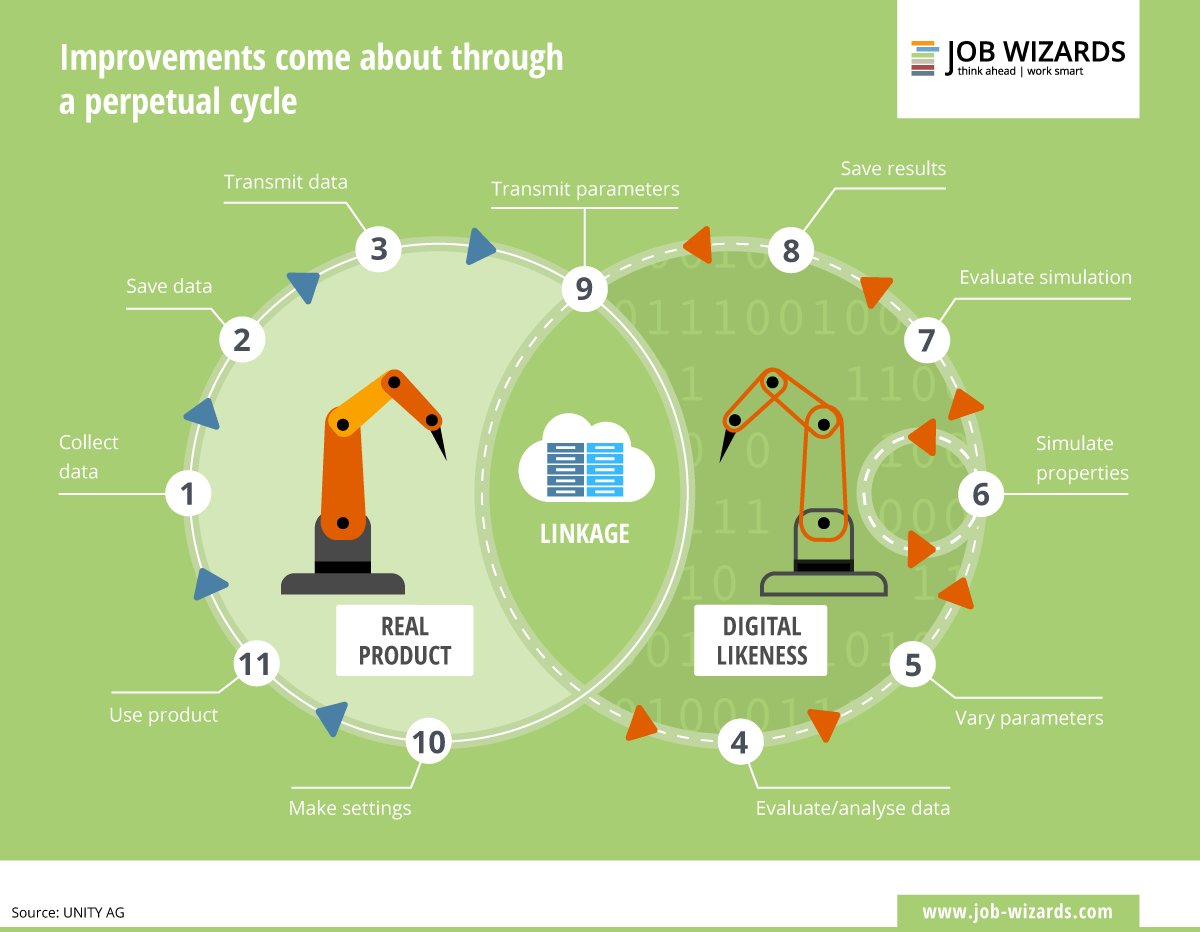A digital twin needs a digital thread
Digital twins need data, algorithms and sensors, but even more than that they require a framework that regulates access to that data. They need a digital thread. A digital thread runs through the labyrinth of data, establishing links and correlations.
The digital thread ensures that everyone involved in the process can access the latest data raised by sensors. But staff need to spend a considerable proportion of their time tracking down that data, because integrating information systems that have grown differently takes time and money.
Digital threads exist for different products. A digital thread can follow a product’s entire life cycle. It can connect the requirements for the design, to its implementation, to manufacturing instructions, supplier management and things that happen at the customer’s.
This is the only way to ensure that a manufacturer receives a complete overview of the properties and behaviour of its product. A digital thread is also essential to analysis and improvement, because the system ensures that all of the various functions and departments in the business are always working with the latest information.

Improvements come about through a perpetual cycle
What areas should digital twins be used in?
Look briefly at the benefits of digital twins and the answer is obvious: every area.
- Digital twins reduce lead times by up to 30 percent. By sensors providing real time data analysis, they can improve the efficiency of machine usage in manufacturing by around 20 percent.
- They improve our understanding and prediction of the actual capability, performance, and operation of equipment and products.
- Business results can be demonstrably improved by the Internet of Things (IoT) and by visualising data and analysis.
- IT integration enables a complete overview of products and systems in real time.
- Every area of a business can benefit from digital service twins. They reflect the entire structural organisation of a business, its systems, processes and workflows.
What do I need to get going?
SMEs should not overdo things when setting up a digital thread and digital twin. It’s better to start small. We recommend adopting a procedure used in agile software development which has become widespread in Industry 4.0: the ‘minimum viable product’. This is a technology that helps minimising risks when developing products, services and business models.
The minimum viable product can be a version of a new product, service or business idea that can be set up with little effort.
Ideally, things start out with a physical object or a product group with which to create a digital twin which stores all the data raised by sensors, machinery and partners. This ranges from development, to distribution, to use. Proceeding this way as part of digital transformation also sets up the ideal starting point from which to extend a digital thread.
Enterprises need the right personnel for this – people, in other words, who can interpret the data. Teams who take on this task are ideally made up of data scientists who can extract actionable findings from the use of digital twins.
You also need the right software. Design, simulation and analysis software can meet management’s minimum requirements. The cost of creating and running a virtual likeness of a real object depends on the requirements which the likeness has to fulfil.
Recent technological developments have dramatically reduced the cost of processing power, storage and bandwidth, and as a result, the use of digital twins is now economically viable in many areas – especially if they reflect the entire life cycle of a product